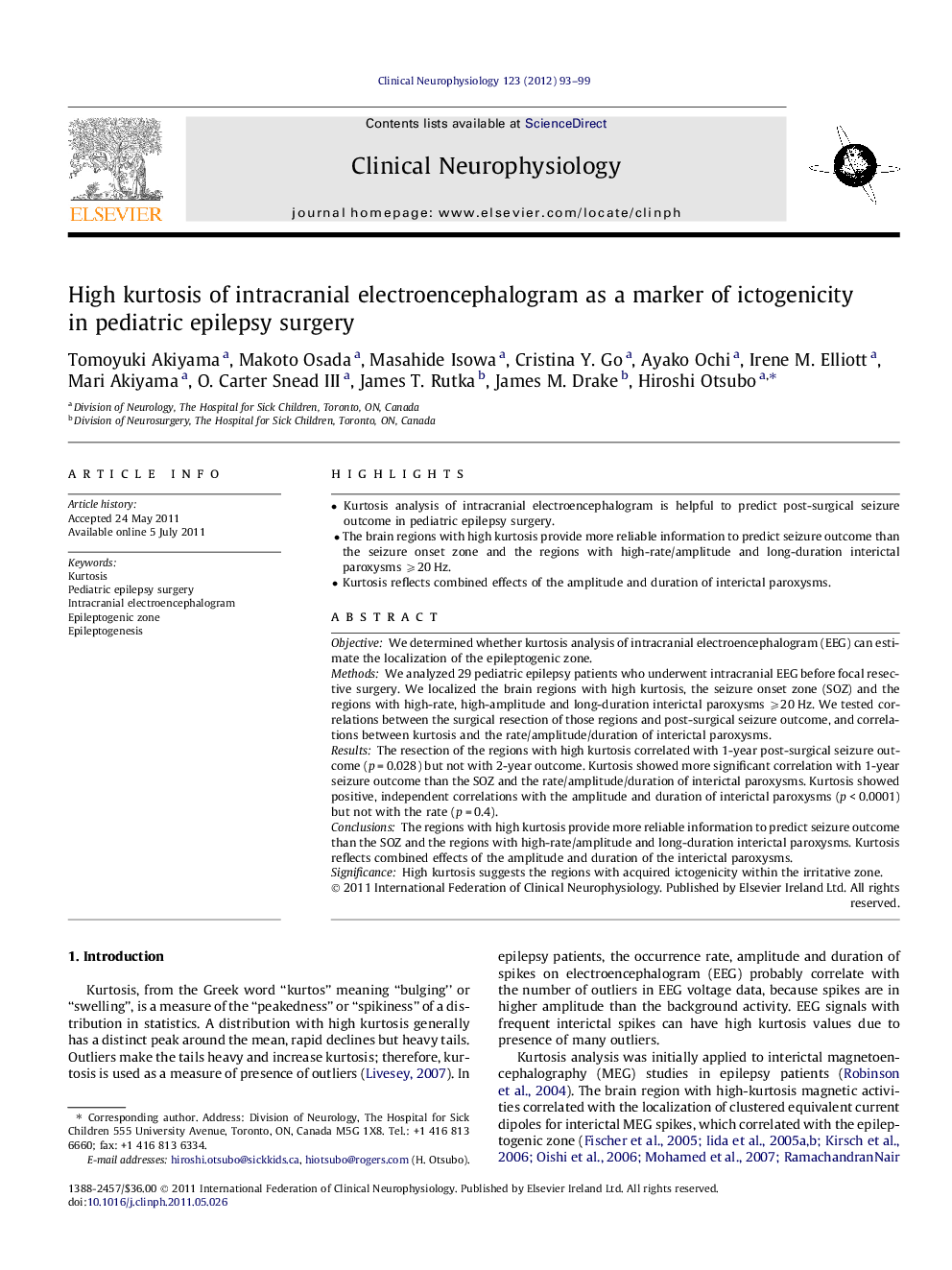| Article ID | Journal | Published Year | Pages | File Type |
|---|---|---|---|---|
| 3043835 | Clinical Neurophysiology | 2012 | 7 Pages |
ObjectiveWe determined whether kurtosis analysis of intracranial electroencephalogram (EEG) can estimate the localization of the epileptogenic zone.MethodsWe analyzed 29 pediatric epilepsy patients who underwent intracranial EEG before focal resective surgery. We localized the brain regions with high kurtosis, the seizure onset zone (SOZ) and the regions with high-rate, high-amplitude and long-duration interictal paroxysms ⩾20 Hz. We tested correlations between the surgical resection of those regions and post-surgical seizure outcome, and correlations between kurtosis and the rate/amplitude/duration of interictal paroxysms.ResultsThe resection of the regions with high kurtosis correlated with 1-year post-surgical seizure outcome (p = 0.028) but not with 2-year outcome. Kurtosis showed more significant correlation with 1-year seizure outcome than the SOZ and the rate/amplitude/duration of interictal paroxysms. Kurtosis showed positive, independent correlations with the amplitude and duration of interictal paroxysms (p < 0.0001) but not with the rate (p = 0.4).ConclusionsThe regions with high kurtosis provide more reliable information to predict seizure outcome than the SOZ and the regions with high-rate/amplitude and long-duration interictal paroxysms. Kurtosis reflects combined effects of the amplitude and duration of the interictal paroxysms.SignificanceHigh kurtosis suggests the regions with acquired ictogenicity within the irritative zone.
